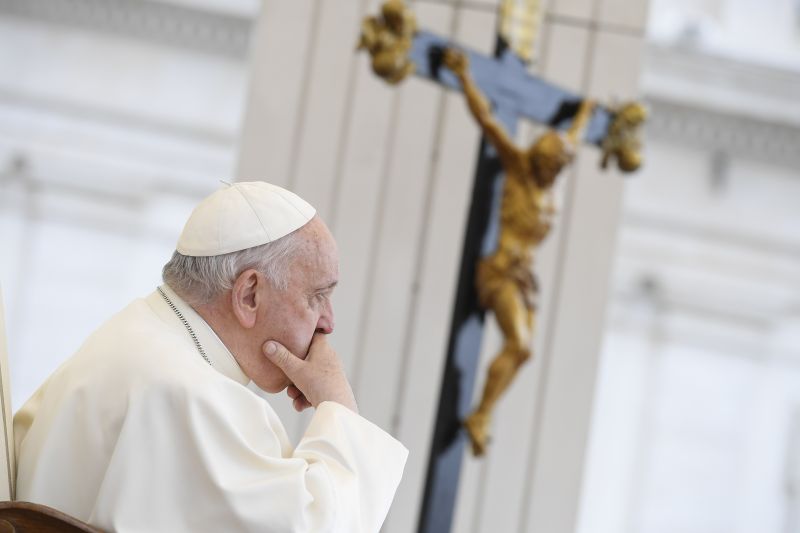
Rome Newsroom, May 18, 2023 / 07:00 am (CNA).
Pope Francis offered his condolences Thursday after at least nine people died in devastating floods in northeastern Italy.
The pope sent a condolence telegram to Cardinal Matteo Maria Zuppi, the archbishop of Bologna, on May 18 after intense rainfall across the Italian region of Emilia Romagna caused severe flooding and landslides.
Thousands have been evacuated from the worst-hit areas, which include Ravenna, a city famous for its Catholic churches’ sixth-century Byzantine mosaics.
Images from the towns of Faenza and Cesena show cars almost entirely submerged in muddy water. Rescue workers used helicopters and dinghies to help people escape from flooded buildings.
According to local officials, some parts of the region received nearly 20 inches of rain in 36 hours. The heavy rains caused 23 rivers across the region to burst their banks and 120 landslides.
Situazione drammatica in #EmiliaRomagna. Pesante alluvione.
Sarà allerta rossa anche domani. Nel frattempo le immagini che arrivano dalla Romagna fanno paura.
In questo video il salvataggio di una mamma con la sua bimba di tre anni a Cesena.#16maggio | #AllertaMeteoER pic.twitter.com/d9GKeRhxki
— Giovanni Cristiano (@Jo_Reporter) May 16, 2023
Catholic bishops in Emilia-Romagna have called for the region to remain united in the face of the emergency and committed to doing everything necessary to collaborate with relief efforts to aid those in need. Zuppi has asked for priests to notify Caritas of emergency situations that need to be addressed.
The telegram sent on the pope’s behalf by Archbishop Edgar Peña Parra, the Substitute (Sostituto) of the Vatican Secretariat of State, said: “While assuring fervent prayers of repose for the deceased and expressing condolences to their families, the Supreme Pontiff invokes from God comfort for the wounded and consolation for those suffering consequences from the grave calamity.”
“Pope Francis thanks all those who in these hours of particular difficulty are working to bring relief and alleviate all suffering, as well as the diocesan communities for their expressions of communion and fraternal closeness to the most afflicted populations. The Supreme Pontiff sends apostolic blessing to all as a sign of his spiritual closeness.”
If you value the news and views Catholic World Report provides, please consider donating to support our efforts. Your contribution will help us continue to make CWR available to all readers worldwide for free, without a subscription. Thank you for your generosity!
Click here for more information on donating to CWR. Click here to sign up for our newsletter.




Leave a Reply